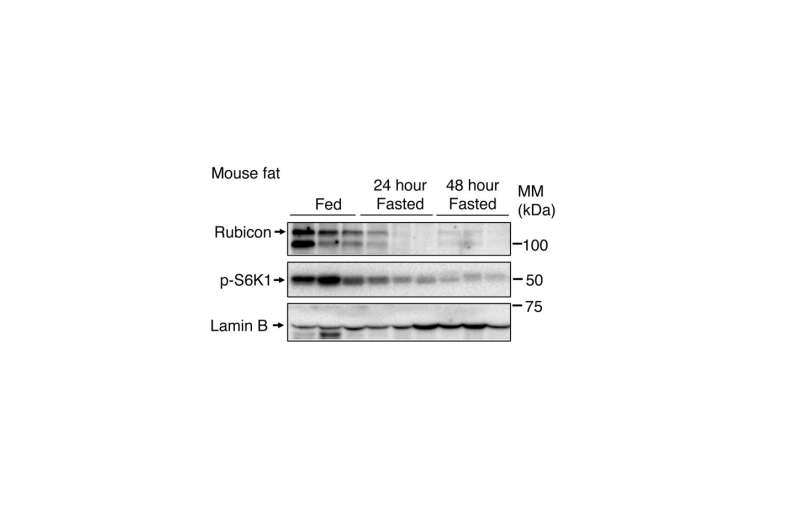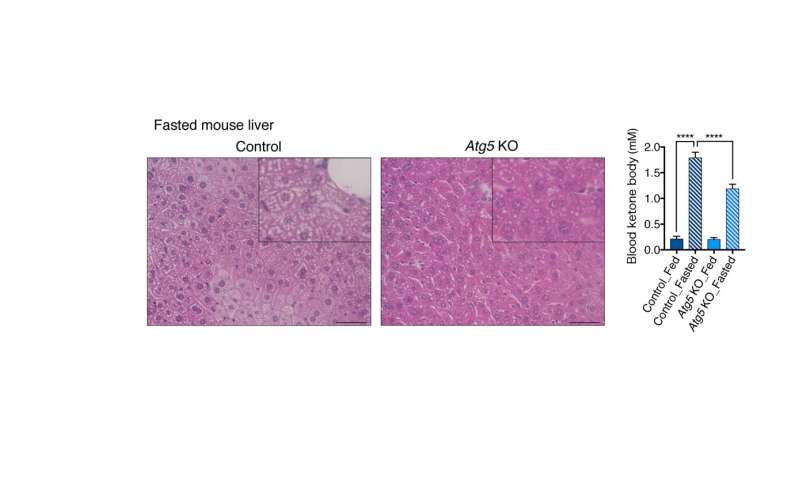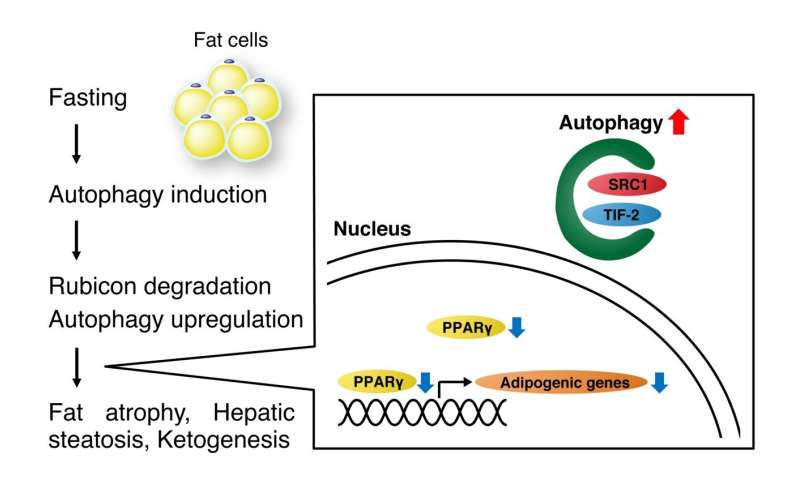
The coming of spring harkens spring cleaning; a time to de-clutter your home and discard things that are no longer needed. In the body, a cellular process calledautophagy occurs regularly to “de-clutter” our cells. Recently, researchers in Japan have shed new light on the relationship between this process and the body’s metabolic response to fasting.
In a new study published in Autophagy, researchers led by Osaka University investigated the role of autophagy. Autophagy is the process by which unwanted cellular components are eliminated via degradation, during fasting conditions.
Previous studies have shown that fasting causes fat tissue, also known as adipose tissue, to break down, which leads to hepatic steatosis (an accumulation of fat in the liver) and ketogenesis (the production of ketones, which are by-products of fat breakdown). A gene called Rubicon Autophagy Regulator (RUBCN) acts as a negative regulator of autophagy, meaning that it functions to suppress autophagy. The research team led by Osaka University previously demonstrated that the loss of RUBCN in fat tissue during aging leads to systemic fat loss. Because RUBCN levels are also reduced during fasting, the researchers hypothesized that this reduction may promote fat loss through the upregulation of autophagy.
“We wanted to further our understanding of how autophagy is involved in the body’s metabolic response to fasting,” says lead author Tadashi Yamamuro. “To do so, we evaluated the effects of modulating autophagy in the adipose cells of fed and fasting mice.”

The researchers used several mouse models to perform their investigation, including an adipose-specific model that lacked RUBCN and an adipose-specific model that lacked ATG5, a gene that is essential for autophagy to occur. Fat loss, triglyceride levels, and liver weight were evaluated in these mice and compared with control mice under fed and fasting conditions.
“In control mice, fat loss, hepatic steatosis, and ketonemia were observed under fasting conditions,” says senior author Tamotsu Yoshimori. “Fed RUBCN knockout mice exhibited responses that were similar to those of fasted control mice, while fasted ATG5 mice exhibited reduced fat loss, hepatic steatosis, and ketonemia.”

The researchers also found that fasted control mice exhibited a substantial decrease in the expression of adipogenic, or fat-promoting, genes. In ATG5 knockout mice, this reduction was not observed, indicating that autophagy plays a role in the reduction of adipogenic gene expression.
Taken together with the findings from the research team’s previous study, it appears that upregulation of autophagy in adipose tissue is a hallmark of both fasting and aging. In addition to revealing a previously unknown mechanism of the fasting response, these findings may have important implications for our understanding of metabolism during aging.
Osaka University

